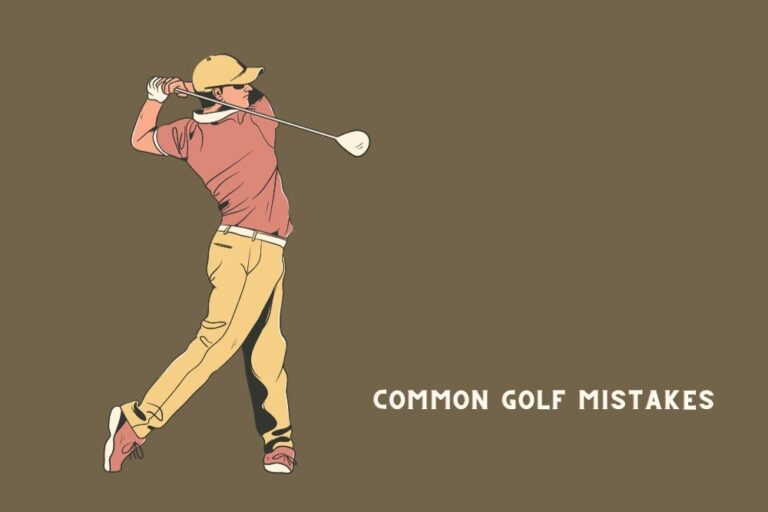
In golf, a draw is when the golf ball begins slightly to the right of the target and then curves gently back to the left (for right-handed golfers). It’s a shot many golfers aim to master because of its control and consistency on the course. To hit a draw, aim right of your target, maintain a steady swing, shift your weight correctly, close the club face slightly, and swing the club from the inside out.
With practice, golfers can learn to hit draws more consistently, which can help them keep the ball on the fairway and prevent it from going off-course. Whether you are a beginner or an experienced player, mastering the draw can improve your game and increase your confidence on the golf course.
Definition and Advantages of Draw Shots in Golf
A draw shot in golf is like painting a curve with your golf ball. It starts away from your target and then tilts back towards it. If you are right-handed, your ball will swing from right to left, while for left-handed golfers, it will swing from left to right. This helps golfers to be more accurate and hit the ball more consistently.
Here are some advantages that continuous draw shots offer:
- Increase Control: Draw shots help golfers aim better and predict where the ball will land.
- Better Accuracy: With a draw shot, the golfers can hit the ball more consistently, improving their accuracy on the course.
- Increase Distance: Drawing the ball adds topspin, which helps propel it farther with a lower trajectory, resulting in more distance on the shot.
How To Hit a Draw in Golf
To hit a draw in golf, you need to tweak your approach and equipment. Sometimes, your gear might hold you back, especially if designed for a fade shot. Understanding proper technique is crucial, but it’s essential to keep an open mind and focus on the steps without getting confused by the various instructions you’ve heard before.
Step-by-Step Guide: Drawing Your Golf Swing Consistently
1. Set up Your Ball Properly
To set up your golf ball correctly, place it in line with the step of your front foot. This helps you hit the ball accurately with your driver. How high you make it is also important. If it’s high, your swing will be low. If it’s low, your swing will be steep. So, aim for this sweet spot and swing away.
2. Open Your Club Face
Aim your club face slightly to the right of your target to draw. This helps to deflect the ball back towards its target. At impact, where your clubhead meets the ball, matters a lot. Opening your club face encourages the ball to spin in a specific direction. So, if you want your ball to draw, make friends with the idea of opening your club face a little.
3. Aim Your Body To The Right
Keeping your body on the right side in golf helps create the draw. Align your feet, hips, and shoulders more to the right than your club face. This position closes the clubface relative to your swing, causing the ball to spin toward the target. Try stepping your right foot back a little at the start for a stronger draw. This adjustment encourages an inside-out swing path by increasing your draw shot.
4. Shallow Your Swing
When you swing your golf club, remember to keep it shallow. This means pulling it back somewhat, especially with your driver. If you do this, it’s easy to flatten it while moving down. This flattening is crucial to achieving the correct inside-out swing path to hit the draw. So, focus on making your swing more level, especially with the driver. These adjustments can help you control the direction and curve of your shots without requiring major changes to your overall swing technique.
5. Rotate Your Upper Body on the Backswing
Rotate your upper body on the backswing by flexing not only your arms but also your shoulders. Bend your upper body and push your back up, maintaining your balance. Don’t lean too much to one side. Bending your upper body helps keep your swing smooth and prevents it from going out too much. Remember to keep your clubface off for the draw shot.
6. Shift Your Weight To Transition
Transitions are very important in your golf swing. Remember, it is important not to change your weight. Your shot can suffer if you don’t shift your weight to your leading edge. Your body can backslide, weakening your shot, and your clubface can open up too much, disrupting your aim. So, when you swing, make sure you shift your weight smoothly to your front to hit better shots.
7. Push Hips Slightly Forward on the Downswing
During the downswing, gently tilt your hips forward without bending, shift your weight to the front leg, and twist your hips. Keep your shoulders back so they don’t roll too quickly, and your weight doesn’t go backward. This movement helps you hit the ball powerfully while maintaining balance and control.
8. Impact
Impact occurs when the club hits the ball. To hit it straight, avoid swinging your arms too much. Turning them too far into the target causes the clubface to close before hitting the ball. This means the club face is pointing right when it should be straight. Keep your arms steady to launch the ball in the right direction.
9. Release
Release your club after impact to complete the swing. Keep the arms straight until they are about 45 degrees in front for a perfect draw. Let the momentum swing, pulling your body around your spine, lifting your chest, and facing the target. Imagine your arms swinging freely until they lose momentum. Work hard for a proud and balanced finish to your swing.
Benefits of Draws in Golf
Drawing the ball in golf can offer several benefits on the course. This allows you to control the speed of your shot and navigate obstacles more efficiently.
Improved Distance and Control
One of the main benefits of golf swings is the possibility of increasing distance. You can create more power and distance off the tee or fairway by hitting the ball with a draw. Additionally, pulling the ball can boost your control over its flight path, allowing you to place shots on the course.
Adaptability to Course Layouts
Playing Draw opens up new possibilities for navigating challenging course layouts. With the ability to shape your shots from right to left (for right-handed golfers), you can better manage doglegs and put yourself in a favorable position for approach shots. This adjustment can be especially beneficial for courses with strategically placed hazards and tight fairways.
Overcoming Wind Conditions
In high wind conditions, mastering the draw can be a valuable skill. By swinging the ball from right to left (for right-handed golfers) against the wind, you can counter its impact and maintain better control of your shots. This ability allows you to adjust to different wind conditions and stay competitive regardless of the weather.
Increased Shot-Making Options
Mastering the draw expands the repertoire of shot-making options on the golf course. The draw provides more versatility, whether you need to line up your approach around trees or catch the ball against a crosswind. Having multiple shot shapes at your disposal enhances your overall game and enables you to tackle a wide range of challenges confidently.
Final Thoughts
In golf, a draw means to swing the ball gently from right to left (for right-handed players). This skill is valuable because it helps golfers control their shots and aim more accurately. To make a draw, you must line up your shot correctly, aim slightly to the right, and swing the club in a certain way. By mastering the draw, golfers can hit the ball farther, navigate obstacles, and adapt to weather conditions like wind.






